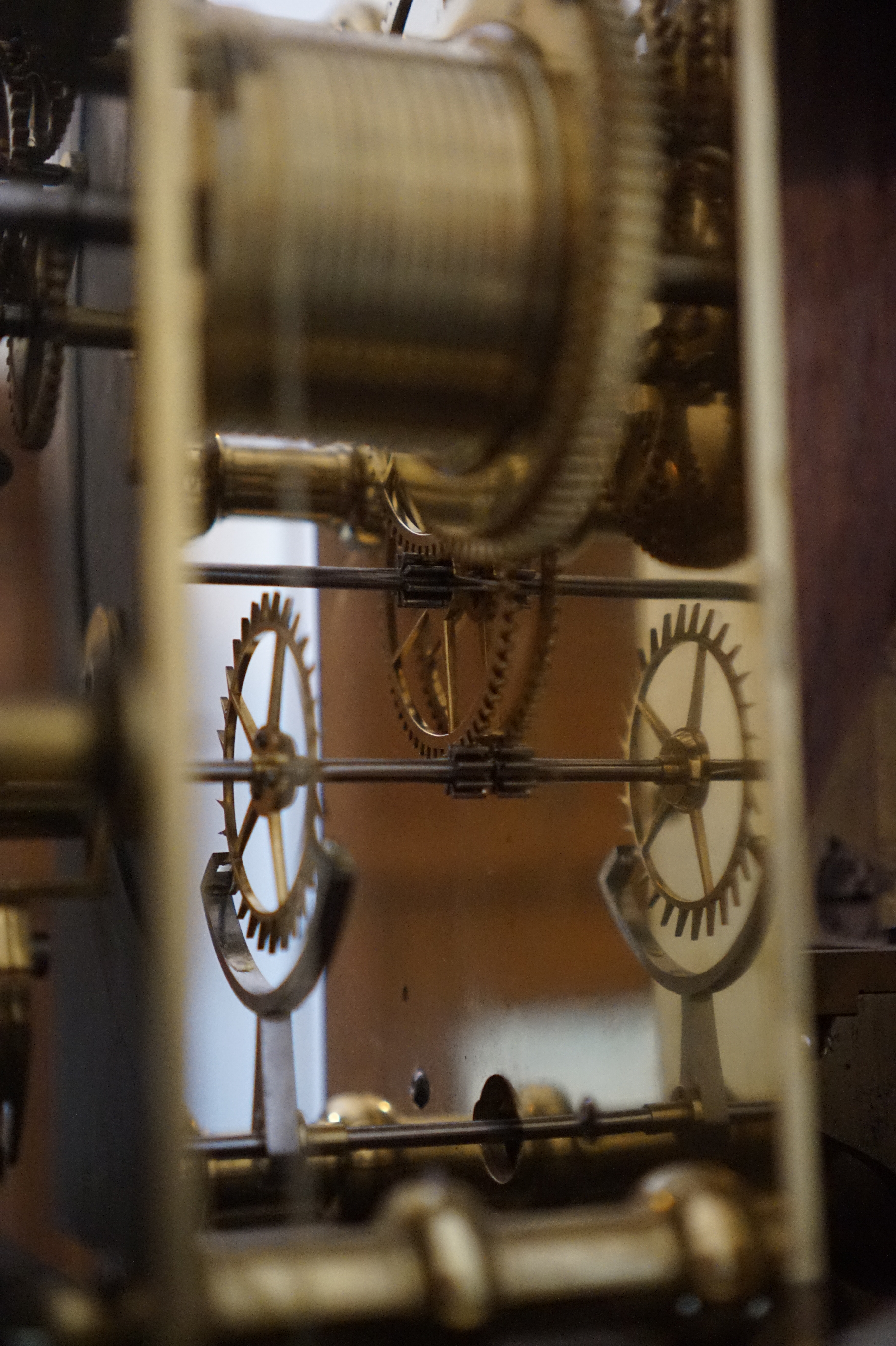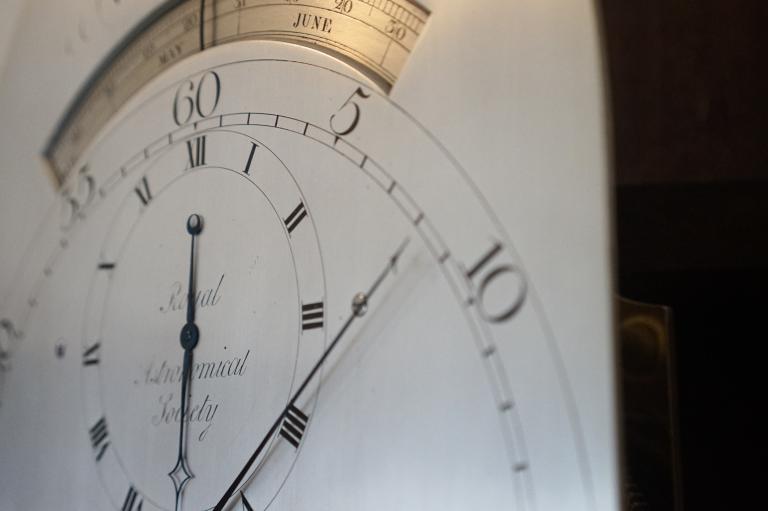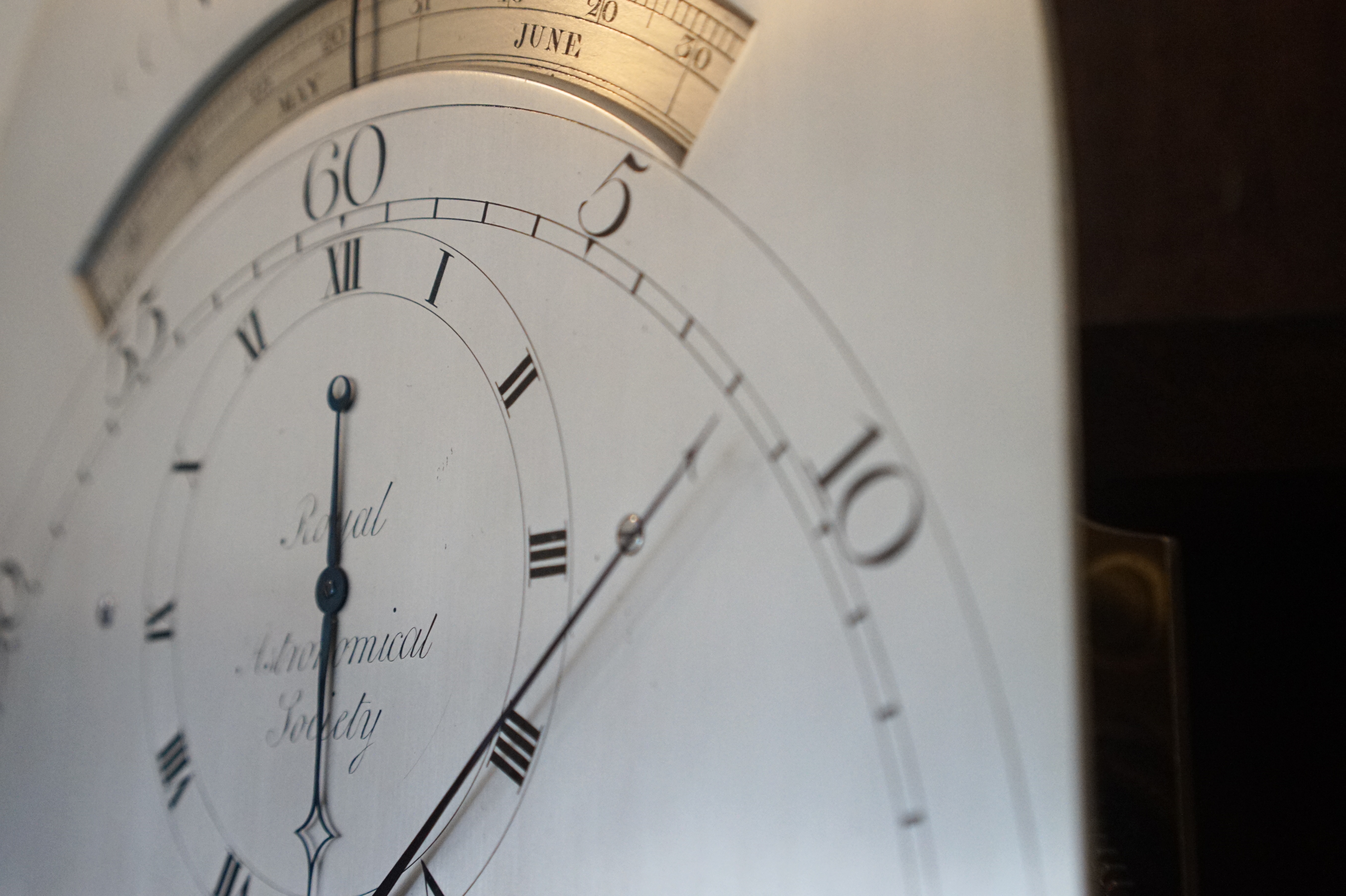Article Main Body

Detail of the mechanism
Image Credit: RAS
The two beautiful regulator clocks that hang outside the Council Room at Burlington House are important items in the Society’s historic instruments collection, writes Beth Gaskell. They are two of the first instruments to be donated to the Society in 1827.
These two instruments belonged to Colonel Mark Beaufoy, one of the first members of the Royal Astronomical Society, and were presented upon his death by his son, George. They were loaned out to fellows and actively used in scientific experiments in the years after they came to the Society, before returning to Burlington House where they remain central to the Society’s historical legacy.
Colonel Mark Beaufoy was born in 1764 in Lambeth, the third son of a successful brewer and vinegar tycoon, and he spent his childhood living on the site of his father’s business. He is said to have conducted his first experiments regarding floatation and liquid displacement amongst the huge vats and coolers of the brewery, and these would go on to influence his later works on material properties and naval engineering. His departure from home, aged twenty, was the result of a runaway marriage to his cousin, Margaretta Beaufoy, and they travelled to Switzerland to escape family disapproval. In August 1787 Beaufoy became the first British man to climb Mont Blanc, taking with him some equipment to carry out scientific experiments while at the summit, and successfully calculated the latitude of Mont Blanc from his observations. A record of his expedition can be found in the archives of the Royal Society.
The Beaufoys returned to England in 1789, settling in Hackney Wick, and it was at this point that Mark Beaufoy began his scientific experiments in earnest. He was particularly interested in ship design and the flotation properties of different materials, and travelled regularly to Greenwich and Rotherhithe to conduct experiments. He was instrumental in the foundation of the Society for the Improvement of Naval Architecture in 1791, and regularly published papers in the Annals of Philosophy on topics such as ‘Description of an instrument to measure and register the rise and fall of the tide through the whole flow and ebb’ (October 1815) and ‘On the stability of vessels’ (March 1816). He was elected a fellow of the Royal Society in 1790 and the Linnaean Society in 1808, and in 1815 a move to the more rural and well elevated Bushey Heath allowed him to set up his own observatory and increase his pursuit of astronomical matters.
Beaufoy’s interests were diverse but he was not always successful. He gained his title while serving in the Tower Hamlets Militia, of which he was made Colonel when it was raised in January 1797. He commanded the militia until 1813, when he was removed from his position after a series of court martial disputes with Robert Bisset Scott, during which he was the first British Army Officer to be successfully court martialled by a junior officer.
Beaufoy was a founding member of the Royal Astronomical Society, attending the first official Council Meeting which took place on the 10thMarch 1820. He attended Council Meetings regularly until July of the following year, and continued to be an active member of the Society, publishing his observations in Memoirs of the Royal Astronomical Society,for the remainder of his life. In February 1827 Beaufoy was awarded one of the first Silver Medals by the Royal Astronomical Society for the work he carried out observing and charting Jupiter’s satellites, using a 5 foot achromatic telescope by Dolland. He was, unfortunately, too ill to attend and receive his medal in person, and passed away shortly afterwards, in May 1827.
A donation of four instruments that were regularly used by Colonel Beaufoy during his experiments was made by Colonel Beaufoy’s son, Captain George Beaufoy, shortly after his father’s death. This donation was made up of the two clocks, which were both made in 1816 (one by Joshua Drabble of London and the other by Henry Baker of Westminster), and two other instruments, a 4 foot transit instrument and an Altitude and Azimuth Circle, both made in 1816 by Cary of London (which were passed to the Museum for the History of Science in Oxford in 1931). The donation of these instruments resulted in George Beaufoy being awarded a lifetime membership of the RAS, and he remained an active participant throughout his life. The instruments were almost immediately requested for use by Captain Smyth, R.N., and continued to be actively used for many years after they came into the Society’s possession.
While no longer used during astronomical observations, these clocks remain an important part of the Society’s collections: a constant and fully functioning reminder of the long history of the organisation and the generosity of its early members.
 RAS
RAS

